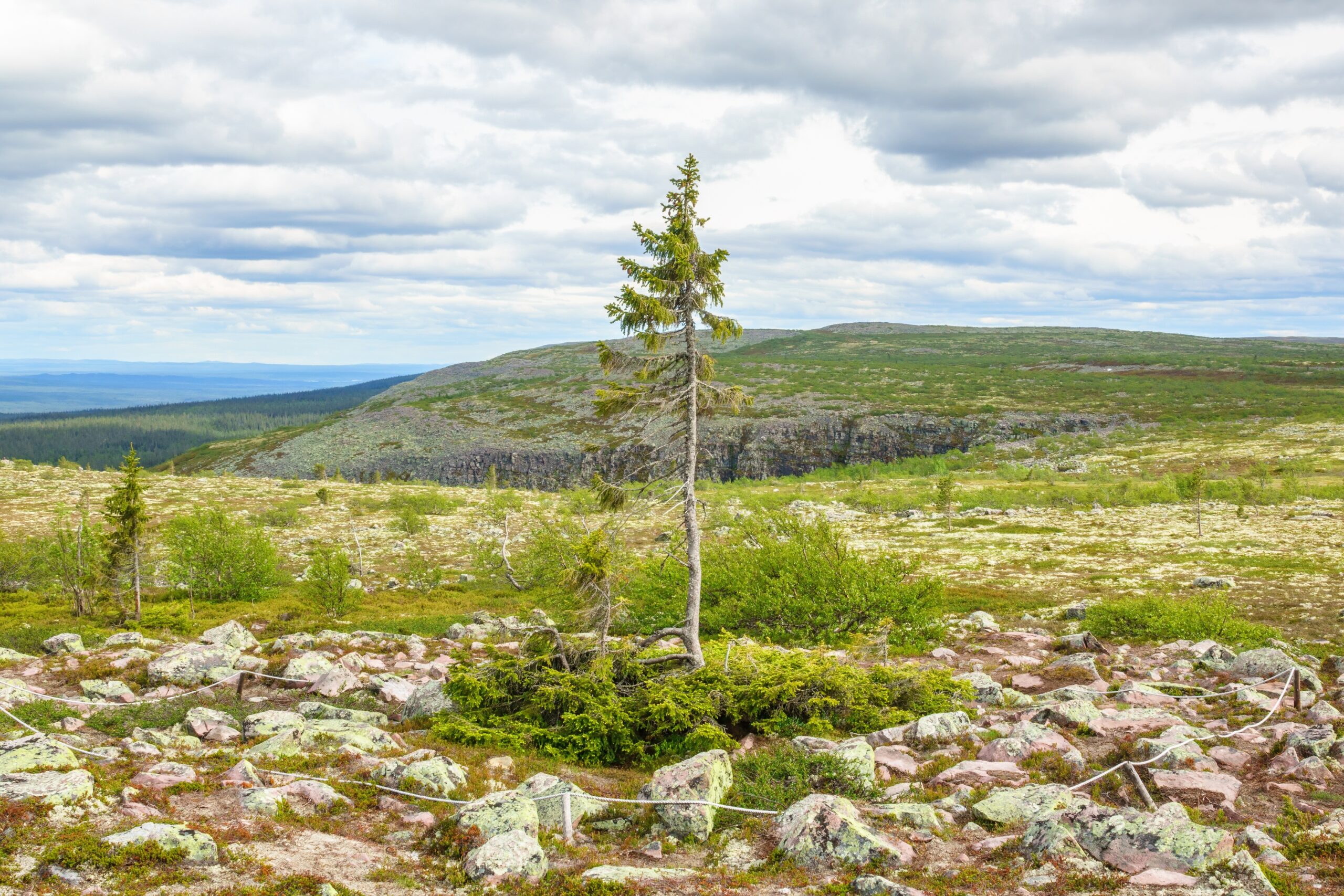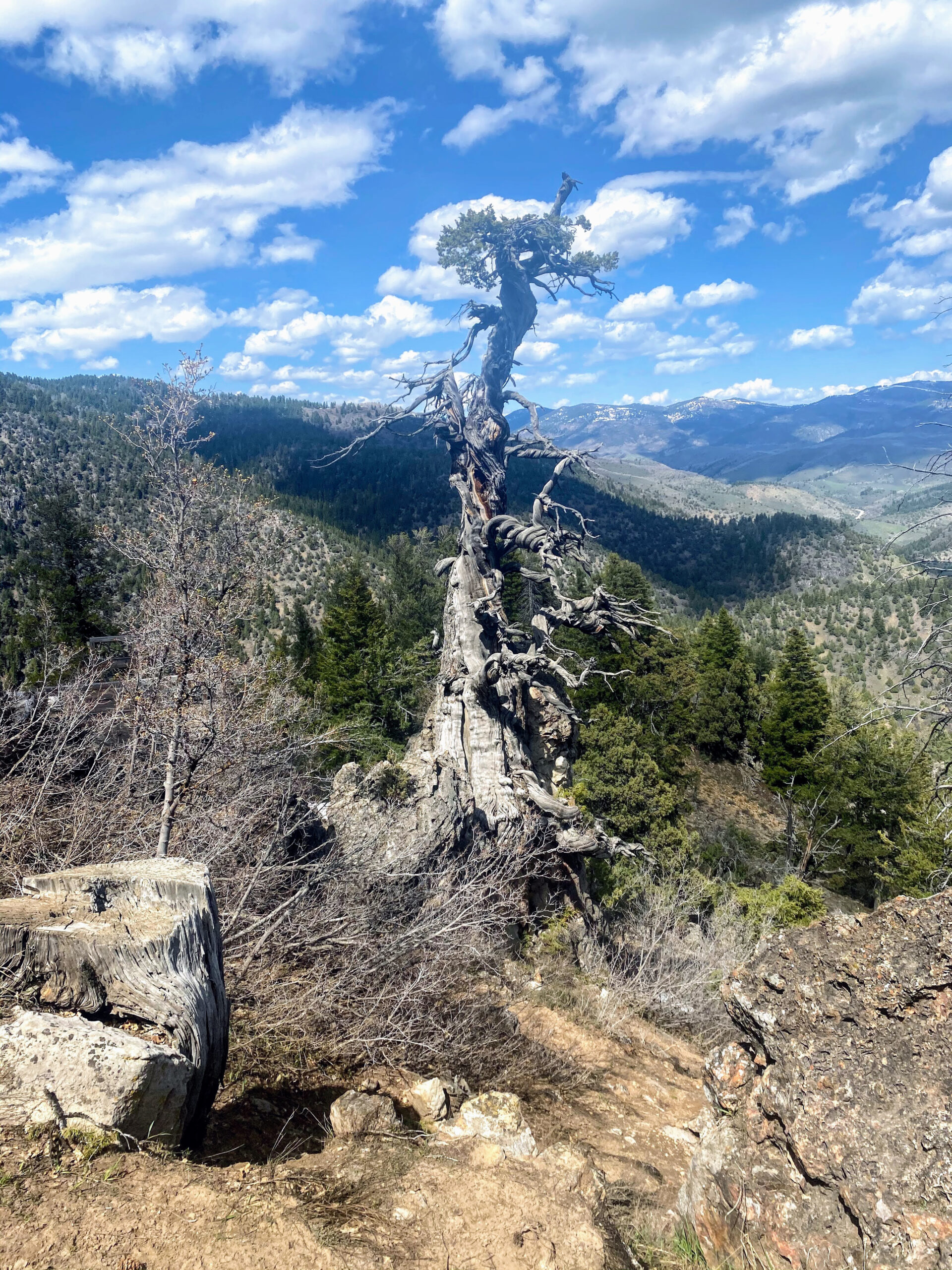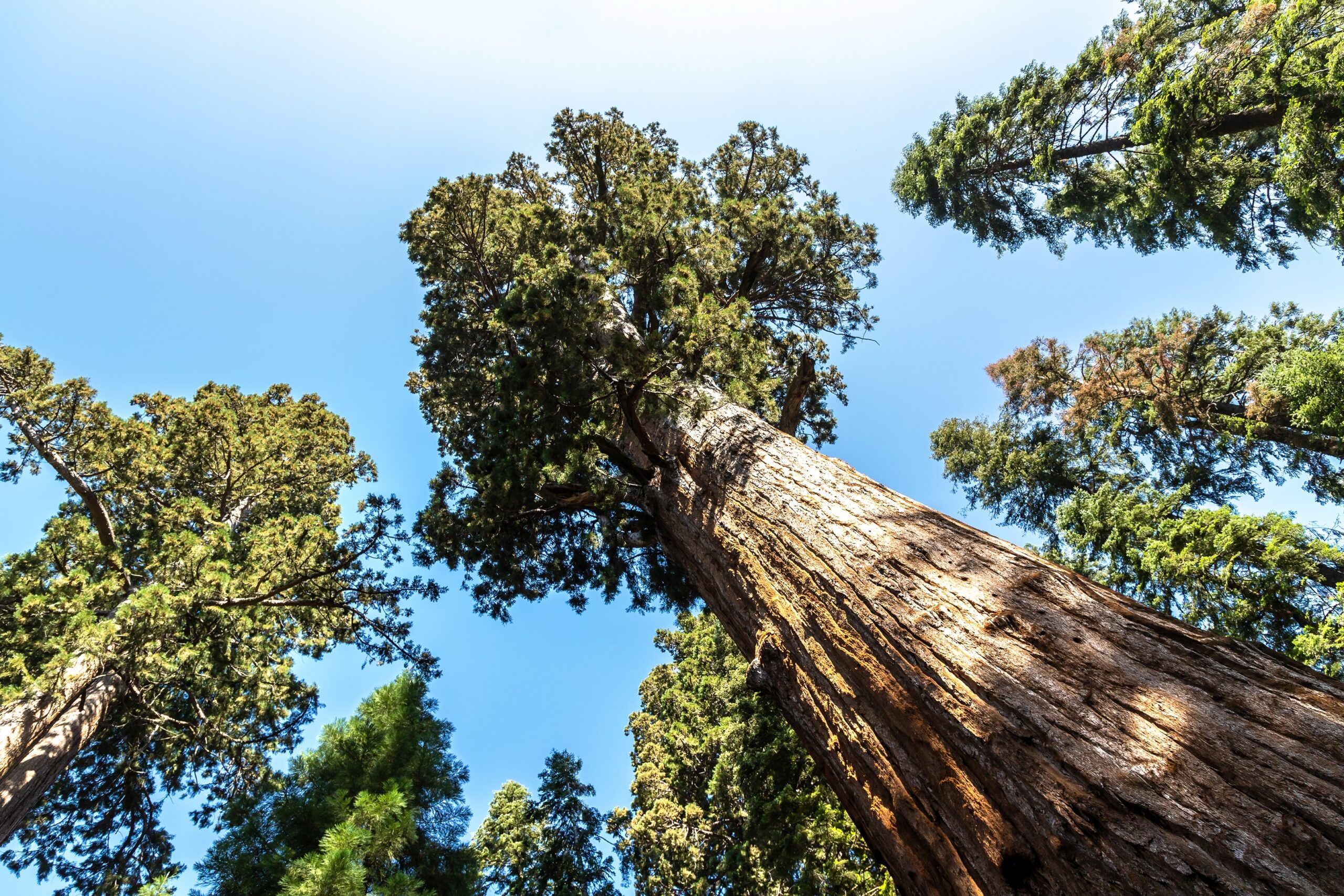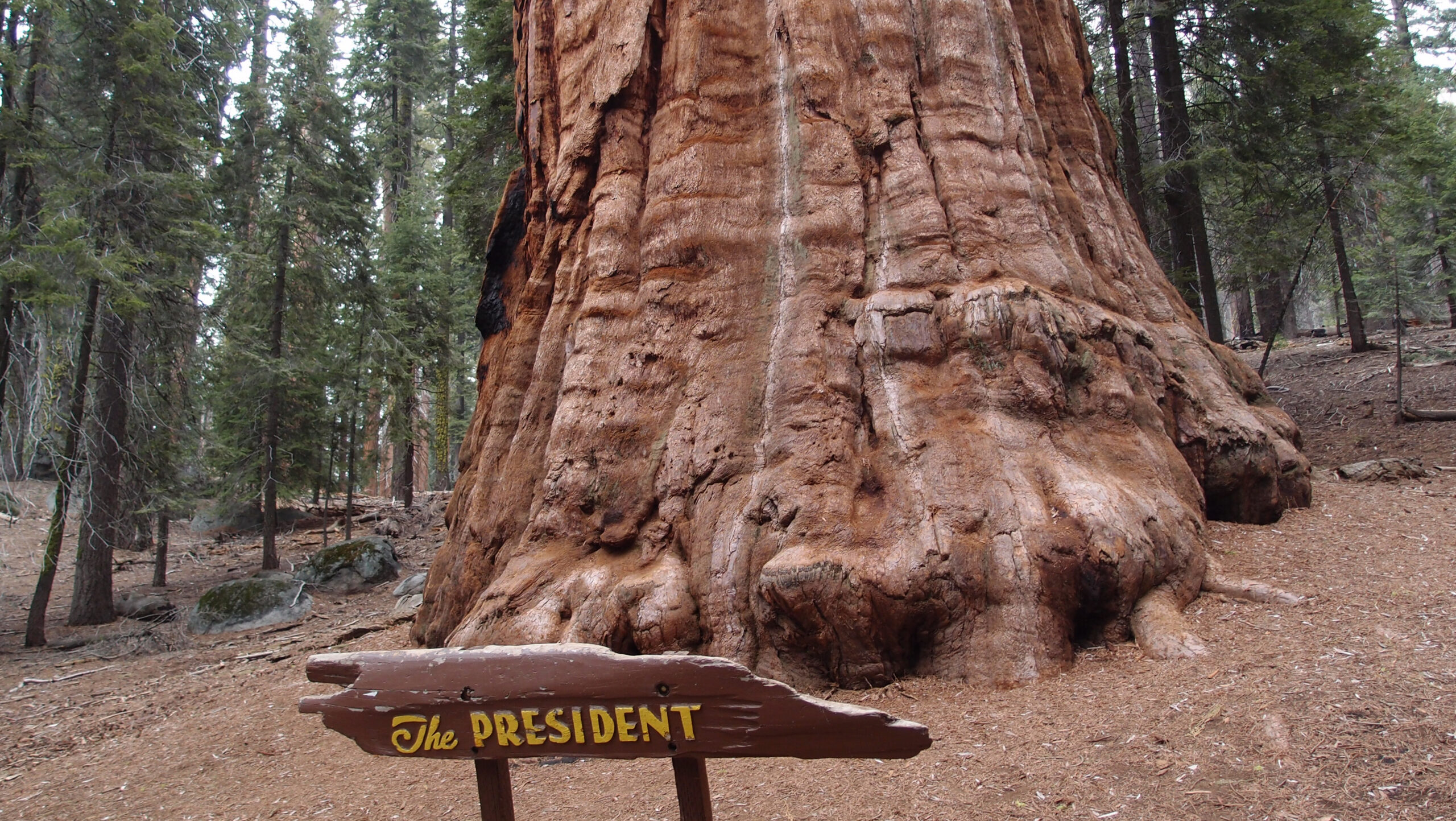Trees are some of the oldest living organisms on Earth, silently witnessing the passage of time and history. Certain species have the extraordinary ability to survive thousands of years, enduring extreme weather, poor soil, and other harsh conditions. These ancient trees not only offer us a glimpse into the distant past but also stand as powerful symbols of resilience and endurance. Below is a look at some of the most remarkable and oldest trees in the world, each with its own unique story of survival and awe-inspiring age.
Methuselah – Great Basin Bristlecone Pine, USA

Methuselah, standing in the White Mountains of California, is a true marvel. This Great Basin bristlecone pine is named after the biblical figure Methuselah, said to have lived 969 years, though the tree has far surpassed that lifespan. Estimated to be around 4,850 years old, Methuselah holds the title as one of the oldest living non-clonal organisms in the world. Its gnarled and twisted trunk stands at an altitude of over 10,000 feet, enduring harsh winds, cold temperatures, and dry, rocky soil. This ancient tree’s survival in such an unforgiving environment showcases the extraordinary resilience of its species. Its exact location remains hidden to protect it from potential damage by visitors.
Old Tjikko – Norway Spruce, Sweden

Old Tjikko may look unassuming at first glance, but its hidden story beneath the soil makes it extraordinary. Located on the Fulufjället Mountain in Sweden, this Norway spruce’s root system is approximately 9,560 years old, making it one of the oldest clonal trees in the world. The tree itself has regenerated over millennia, with new trunks sprouting as older ones die. While the visible part of Old Tjikko may be much younger, it’s the ancient root system that makes it truly remarkable. This tree has survived through massive climate shifts, including the end of the last ice age, adapting to its changing environment over millennia.
Prometheus – Great Basin Bristlecone Pine, USA

Prometheus, a Great Basin bristlecone pine, once held the title as the oldest tree in the world before it was tragically cut down in 1964. It grew on Wheeler Peak in Nevada and was estimated to be over 4,900 years old at the time of its death. The tree’s age was determined through the study of its rings, revealing it had lived through countless historical events and climate changes. The felling of Prometheus remains controversial, with conflicting reports about whether the tree was cut down deliberately or accidentally during a scientific research project. Nevertheless, its loss highlights the importance of preserving ancient trees and respecting their irreplaceable value.
Sarv-e Abarqu – Cypress, Iran

Sarv-e Abarqu, located in the Iranian city of Abarqu, is an ancient cypress tree believed to be over 4,000 years old. It is a symbol of both natural beauty and historical significance, standing 25 meters tall with a circumference of around 11.5 meters. This tree has been revered in Persian culture for centuries and is deeply rooted in the region’s mythology and spiritual beliefs. Some legends claim that it was planted by the prophet Zoroaster, linking the tree to Iran’s religious heritage. Sarv-e Abarqu is a national monument, protected for its cultural and ecological importance, and continues to be a popular site for pilgrims and visitors alike.
Llangernyw Yew – Yew Tree, Wales

The Llangernyw Yew stands in the picturesque churchyard of St. Digain’s Church in the village of Llangernyw, Wales. This incredible yew tree is estimated to be between 4,000 and 5,000 years old, making it one of the oldest trees in Europe. Yew trees are known for their incredible longevity and regenerative abilities, often sprouting new trunks from decaying ones, allowing them to live for millennia. The Llangernyw Yew is steeped in local folklore, with some believing it has mystical properties. It has been a silent witness to the passage of time, from the Bronze Age to modern-day Wales, and remains a symbol of strength and continuity in the region.
Alerce (Gran Abuelo) – Patagonian Cypress, Chile

Alerce, also known as Gran Abuelo (The Great Grandfather), is a Patagonian cypress tree found in Chile’s Alerce Costero National Park. This towering giant is estimated to be over 5,400 years old, making it one of the oldest known trees in the world. The tree’s immense trunk, measuring more than 4 meters in diameter, reflects its ancient history and slow growth. The cool, temperate rainforests of southern Chile have provided an ideal environment for its survival. Alerce trees were once heavily logged for their durable wood, but Gran Abuelo has been protected, and now stands as a testament to the forest’s resilience and the enduring strength of nature.
Sugi of Jomon – Japanese Cedar, Japan

Jomon Sugi, located on the island of Yakushima, Japan, is an ancient and sacred Japanese cedar tree. Estimated to be between 2,000 and 7,200 years old, it is the oldest and largest tree of its kind in Japan. The tree is a symbol of the country’s spiritual and natural heritage, and it holds a deep significance in Japanese culture. Jomon Sugi stands 25 meters tall and has a trunk circumference of over 16 meters. Its name, “Jomon,” refers to the Jomon period, a prehistoric era in Japan, suggesting that the tree began its life during that ancient time. Hidden deep in the island’s misty forests, the tree attracts hikers, nature lovers, and pilgrims, all of whom are drawn by its immense age and grandeur. Its dense branches and massive size evoke a sense of reverence and mystery.
Patriarca da Floresta – Cariniana, Brazil

The Patriarca da Floresta is a towering Cariniana tree, located in Brazil, and is believed to be over 3,000 years old. Found in the Atlantic Forest region, this tree is a symbol of both natural beauty and longevity in the area. Standing at around 50 meters tall, it has been declared a natural heritage site to protect it from deforestation. Its massive trunk and ancient roots connect it deeply to the surrounding environment. The Patriarca da Floresta is one of the few surviving ancient trees in the rainforest and a vital reminder of the need to conserve these ecosystems.
Olive Tree of Vouves – Olive Tree, Greece

The Olive Tree of Vouves, located on the island of Crete in Greece, is estimated to be between 2,000 and 3,000 years old. This ancient olive tree is still alive and producing olives to this day. Its gnarled trunk and thick branches have withstood the test of time, surviving through wars, changes in agricultural practices, and environmental shifts. The tree is considered a cultural treasure and a symbol of peace and longevity in Greek history. It’s a popular tourist attraction, and its olives are used to create symbolic wreaths for the Olympic Games.
Chestnut Tree of One Hundred Horses – Chestnut Tree, Italy

The Chestnut Tree of One Hundred Horses, located on the slopes of Mount Etna in Sicily, Italy, is one of the oldest known chestnut trees in the world. Estimated to be between 2,000 and 4,000 years old, it gets its name from a legend that says one hundred knights and their horses sought shelter under its enormous canopy during a storm. The tree has a massive circumference of over 57 meters and still stands as a living monument of Sicily’s ancient history. Despite its age and the volcanic activity nearby, the tree continues to grow and thrive.
Senator – Pond Cypress, USA

The Senator was a majestic pond cypress tree that once stood in Longwood, Florida, USA. Estimated to be around 3,500 years old, it was one of the oldest trees in the world before it was tragically destroyed by fire in 2012. The Senator stood at over 36 meters tall and had a trunk diameter of 5 meters, making it a true giant. It had survived hurricanes, floods, and centuries of environmental changes before its unfortunate demise. The loss of the Senator was a significant blow to the natural history of the United States, though a clone of the tree, known as “The Phoenix,” has been planted nearby to carry on its legacy.
Jardine Juniper – Rocky Mountain Juniper, USA

The Jardine Juniper is an ancient Rocky Mountain juniper tree found in Logan Canyon, Utah, USA. Estimated to be over 1,500 years old, it stands at an altitude of around 2,700 meters, enduring harsh winters and dry summers in the mountainous terrain. The tree is well-known for its twisted, gnarled appearance and resilient nature. It was discovered in 1923 and has since become a popular destination for hikers. Despite its age, the Jardine Juniper continues to grow, a testament to its ability to survive in a tough, unforgiving environment.
General Sherman – Giant Sequoia, USA

The General Sherman is the largest known living tree by volume, located in Sequoia National Park in California, USA. While not the oldest, it is estimated to be around 2,200 to 2,700 years old. This giant sequoia stands at an impressive height of over 83 meters and has a massive trunk that measures 11 meters in diameter at its base. Its sheer size and age make it one of the most awe-inspiring trees in the world. Despite its immense weight and age, the General Sherman continues to grow, adding more mass each year and reminding us of the incredible lifespan of these natural giants.
El Arbol del Tule – Montezuma Cypress, Mexico

El Arbol del Tule, a Montezuma cypress located in the town of Santa María del Tule in Oaxaca, Mexico, is famous for its immense size and age. Estimated to be around 1,500 to 3,000 years old, this tree boasts the widest trunk of any tree in the world, with a circumference of over 42 meters. Its massive roots anchor it deeply into the earth, making it a revered figure in Mexican history and culture. The tree is a designated UNESCO World Heritage Site and a beloved landmark for both locals and tourists, standing as a symbol of endurance and natural beauty.
Fortingall Yew – Yew Tree, Scotland

The Fortingall Yew, found in the small village of Fortingall in Scotland, is one of Europe’s oldest living trees. Estimated to be between 3,000 and 5,000 years old, this ancient yew is steeped in folklore and history. Some legends claim that Pontius Pilate was born under its shade. The tree has a hollow trunk due to its age, with its remaining limbs still producing new growth. The Fortingall Yew sits in a churchyard, surrounded by stone walls, and continues to thrive despite its advanced age and weathered appearance.
The President – Giant Sequoia, USA

The President is an enormous giant sequoia located in Sequoia National Park, California, USA. Estimated to be around 3,200 years old, it is one of the oldest known sequoias in the world. Standing at nearly 75 meters tall, the President is also one of the largest by volume. Its towering presence and thick, rugged trunk make it a symbol of nature’s enduring power. The tree continues to add mass each year, and its extensive branches form a vast canopy, further highlighting its impressive scale and age.
Alerce Costero – Patagonian Cypress, Chile

The Alerce Costero is an ancient Patagonian cypress tree found in Alerce Costero National Park, Chile. Estimated to be over 3,600 years old, this slow-growing tree is revered for its longevity and durability. The cool, temperate climate of southern Chile has allowed it to thrive for millennia. The Alerce’s wood was once highly valued for construction, but logging of these trees is now restricted to protect what remains of this ancient species. The tree stands as a powerful reminder of the importance of conservation efforts in preserving our natural heritage.
Jaya Sri Maha Bodhi – Sacred Fig, Sri Lanka

Jaya Sri Maha Bodhi, located in Anuradhapura, Sri Lanka, is a sacred fig tree believed to be over 2,300 years old. This tree holds great religious significance as it is a direct descendant of the original Bodhi tree under which the Buddha attained enlightenment. Planted in 288 BCE, the tree is one of the oldest human-planted trees still thriving. Surrounded by walls and temples, the Jaya Sri Maha Bodhi is a pilgrimage site for Buddhists around the world. It remains a living symbol of spiritual connection and historical reverence.
Te Matua Ngahere – Kauri Tree, New Zealand

Te Matua Ngahere, meaning “Father of the Forest,” is one of New Zealand’s oldest and largest kauri trees, located in the Waipoua Forest. This giant tree is estimated to be over 2,500 years old, with a trunk circumference of 16.4 meters. Its thick, massive trunk and sprawling branches are a testament to its age and strength. Te Matua Ngahere stands as a key figure in Māori culture, embodying wisdom and ancient knowledge. The tree continues to thrive in the dense rainforest, a quiet guardian of the forest’s deep history.
Tane Mahuta – Kauri Tree, New Zealand

Tane Mahuta, also known as the “Lord of the Forest,” is another iconic kauri tree in New Zealand’s Waipoua Forest. Estimated to be around 2,000 years old, it is the largest known kauri tree in the world, standing at over 50 meters tall. Named after the Māori god of the forest, Tane Mahuta holds immense cultural significance. Its towering presence and lush canopy draw visitors from all over the world. The tree remains a symbol of strength, growth, and the deep connection between people and nature.
This article originally appeared on Rarest.org.
More from Rarest.org
20 Iconic Art Movements That Shaped the World of Creativity

Throughout history, art movements have reshaped the way we see and interpret the world around us. Read More.
19 Resilient Desert Creatures That Thrive in Scorching Heat

The desert is one of the harshest environments on Earth, where scorching heat and limited water create extreme living conditions. Read More.
19 Lesser-Known Fashion Designers Who Shaped Iconic Trends

Many iconic fashion trends have been shaped by designers who don’t always get the spotlight. Read More.
